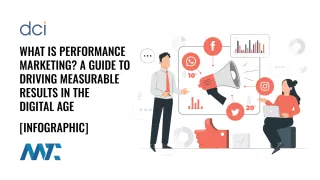Agile Marketing: 5 Advantages Over Traditional Marketing Processes

Agile marketing is a methodology that integrates the principles of agile software development into the marketing function, emphasizing flexibility, customer-centricity, collaboration, and data-driven iteration. It allows marketing teams to move faster, respond more accurately to market changes, and improve outcomes over time through continuous feedback and refinement.
The origins of agile marketing can be traced back to growing dissatisfaction with traditional marketing’s slow, rigid, and often top-down planning structures. Inspired by the success of agile software development frameworks like Scrum and Kanban, early adopters in the marketing world saw an opportunity to apply similar methods to address rapidly changing customer behaviors, digital channel complexity, and the need for more measurable ROI.
A group of marketers codified these principles in the Agile Marketing Manifesto, advocating for responding to change over following a plan and rapid iterations over big-bang campaigns.
Today, agile marketing is not a fringe experiment but a growing movement across enterprise and mid-market companies alike. Its advantages are both strategic and operational. Here are five key ways it surpasses traditional marketing approaches.
Table of Contents
Doing the Right Work: Focusing on Customer Needs Over Internal Bureaucracy
Traditional marketing processes often operate within organizational silos, with layers of approvals and outdated priorities that do not reflect the current market. Campaigns may take months to plan and launch, only to be obsolete when they hit the market. Agile marketing shifts the focus away from internal politics and legacy processes toward what matters—meeting customer needs.
Agile teams use tools like customer journey mapping, real-time data, and iterative testing to ensure the work aligns with consumer behaviors and preferences. Instead of working on the loudest executive’s pet project or following a rigid annual plan, agile marketers continually prioritize based on customer feedback, analytics, and business goals. This ensures that the marketing function delivers real value, not just activity.
Executing at the Right Time: Responding Quickly Through Shorter Cycles
One of the hallmarks of agile marketing is its use of short, repeatable cycles—often called sprints—that enable teams to execute campaigns or experiments quickly, evaluate their impact, and adjust. Traditional marketing timelines, spanning quarters or years, often leave organizations flat-footed when market conditions shift.
In contrast, agile marketing allows teams to reallocate resources, pivot strategies, and launch new initiatives in weeks rather than months. This speed improves time-to-market and allows for better timing when responding to customer behaviors, seasonal trends, or competitive pressures. Whether reacting to a trending topic on social media or adjusting to a change in customer sentiment, agile teams are positioned to act while the opportunity is still relevant.
Reaching the Right People: Cross-Functional Collaboration for Smarter Targeting
Marketing success hinges on delivering the right message to the right person at the right time. Traditional structures often fragment the people and data necessary to do this well—CRM data might be isolated from campaign teams, digital media specialists may not talk to content creators, and feedback loops from sales are rarely integrated.
Agile marketing breaks down these silos by creating cross-functional teams that include diverse roles: strategists, designers, analysts, and developers, all working together. This collaboration fosters a shared understanding of the target audience, ensuring that messaging is more consistent, data-informed, and customer-centric. Agile teams often use personas, journey analytics, and real-time dashboards to make more precise decisions about who to reach and how best to engage them.
Getting Impactful Results: Alignment Across Channels and Functions
In traditional marketing environments, the disconnect between departments often leads to fragmented campaigns—where brand, media, content, and analytics teams work in isolation. Agile marketing solves this by integrating planning, execution, and optimization into a single, aligned workflow.
Because teams are structured around shared goals and work together across channels, they can ensure that messaging is unified, timing is coordinated, and customer experience is consistent. More importantly, agile teams review results continuously, allowing them to make mid-campaign adjustments and optimize performance. The result is better campaign effectiveness and a stronger, more cohesive brand presence.
Optimizing and Improving: Learning from Every Sprint to Boost ROI
Perhaps agile marketing’s greatest strength lies in its built-in improvement mechanism. At the end of every sprint, teams conduct retrospectives to assess what went well, what didn’t, and how future efforts can be improved. This iterative learning loop means that every campaign builds on the lessons of the last.
Over time, this leads to more efficient processes, smarter budget use, and higher ROI. Traditional marketing might run a post-mortem once a year—long after any useful changes can be made. Agile marketing, on the other hand, builds continuous learning into the operating model. It’s not just about being faster—it’s about getting smarter with every iteration.
Takeaways for Implementing an Agile Marketing Strategy
Agile marketing is not a plug-and-play tactic; it represents a cultural and operational shift. For organizations looking to implement an agile marketing strategy, here are some key steps:
- Start small with pilot teams: Choose one or two cross-functional teams to test agile workflows before scaling.
- Adopt agile tools and ceremonies: Stand-ups, sprint planning, kanban boards, and retrospectives are essential to the agile cadence.
- Prioritize transparency and collaboration: Break down silos and encourage open communication across departments.
- Invest in real-time data and analytics: Use metrics not just to report but to drive decision-making in near real time.
- Embrace a test-and-learn mindset: Foster a culture where experimentation is encouraged and failure is seen as a learning opportunity.
By moving away from rigid planning cycles and embracing agile principles, marketers can become more responsive, customer-focused, and impactful. Agile marketing isn’t just about speed—it’s about doing the right work, at the right time, for the right people, and getting better every step.
Here’s a breakdown of how most marketing teams operate versus how agile marketers operate.








